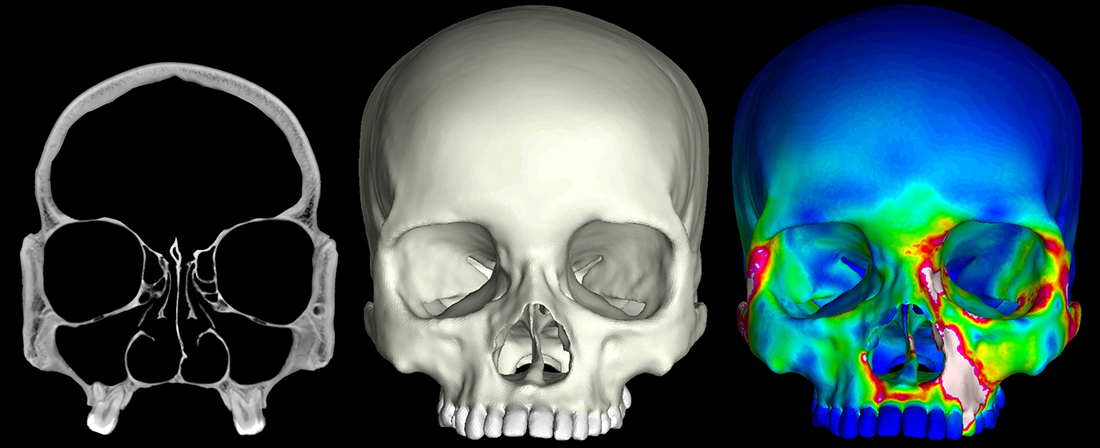Jawbreaker

The human skull is a thing of contradiction. Our small and flat faces allow for substantial leverage when biting and chewing, a trait that bears a striking resemblance to animals that subsist on hard-to-eat foods (think tree bark and unshelled nuts). There’s just one problem: our temporomandibular joint. While we have the ability to pack an efficient bite, the limitations of the human jaw pose a serious risk of dislocation and damage.
To help reach this conclusion, published in science journal PeerJ in July, Texas A&M College of Dentistry researchers Dr. Paul Dechow, professor and chair of biomedical sciences, and Dr. Qian Wang, associate professor, conducted biomechanical tests on computer-based models of human crania. They utilized 3-D finite element modeling to analyze the strain of bite forces produced during feeding simulations and then compared that with the strain found in chimpanzees, our closest living relatives.

Results reveal that humans do indeed experience more limitations than chimps — and our other fossil ancestors — when it comes to forceful biting. These findings mirror a centuries-long development: the shortening of our facial skeleton, including the mandible. The result is higher levels of distractive force on the non-biting side of the temporomandibular joint, which makes human bite force less efficient than modern-day chimps. This only serves to strengthen the hypothesis that the softer and more processed diet of humans could have something to do with our small and graceful faces.
Next steps in this line of research include investigating not only strengths and weaknesses within the human masticatory (chewing) system but also taking a close look at how behavior, agriculture and historical setting impact the human craniofacial skeleton. To do this, Dechow and Wang are collaborating with researchers in China to study the masticatory systems of populations in Northern China dating from 10,000 years ago up to present day.
“During the gracilization of human skulls in recent human history, how such inherent limitations within the masticatory system have influenced the adaptation and evolution of the craniofacial skeleton has not been vigorously studied,” says Wang.
The methods used in the PeerJ study are similar to the ones College of Dentistry researchers used to analyze the skull of Australopithecus sediba, a prehuman species widely considered a close relative of early humans. Those findings were released in a Nature Communications article earlier this year.